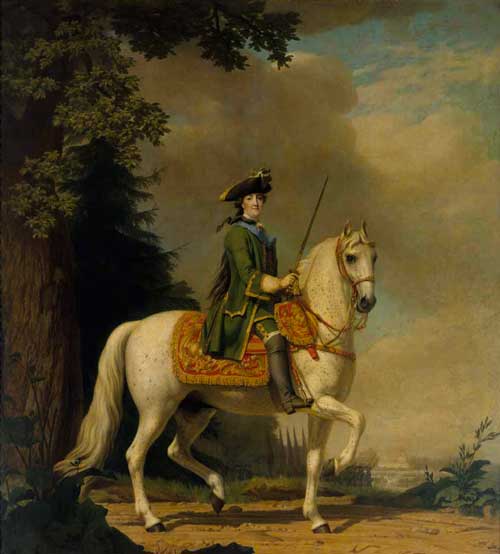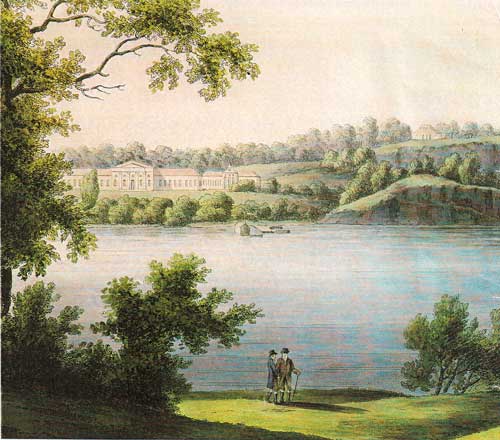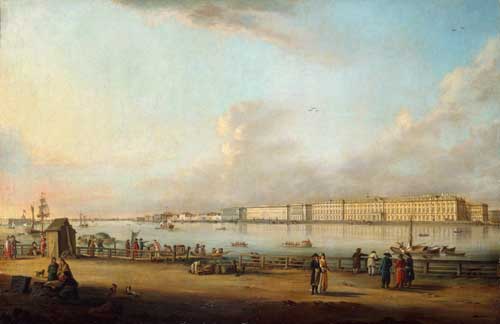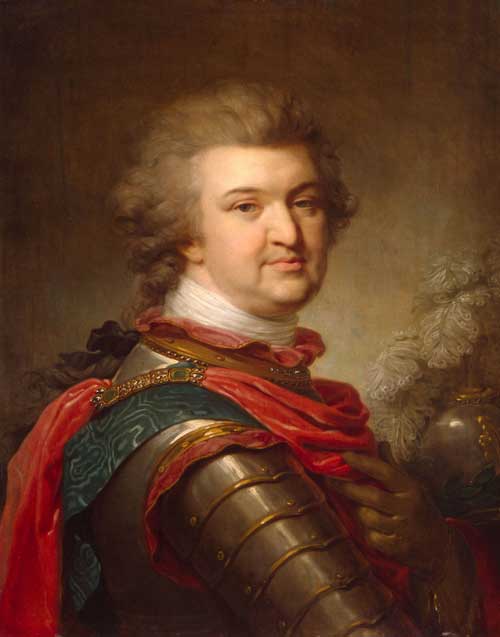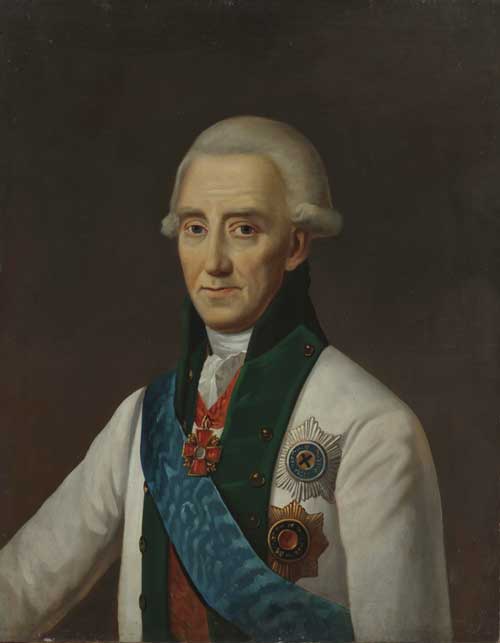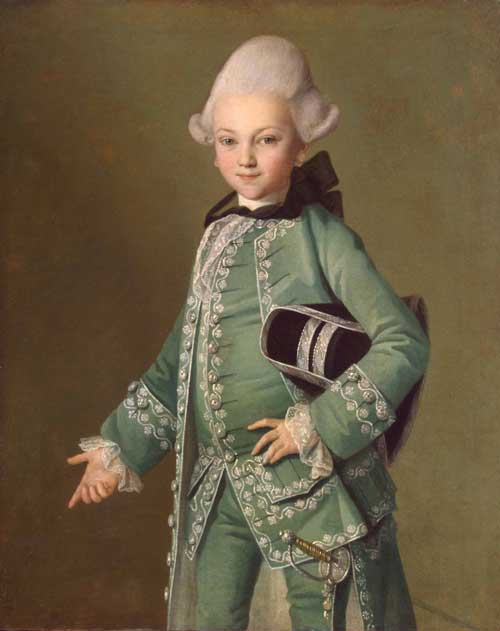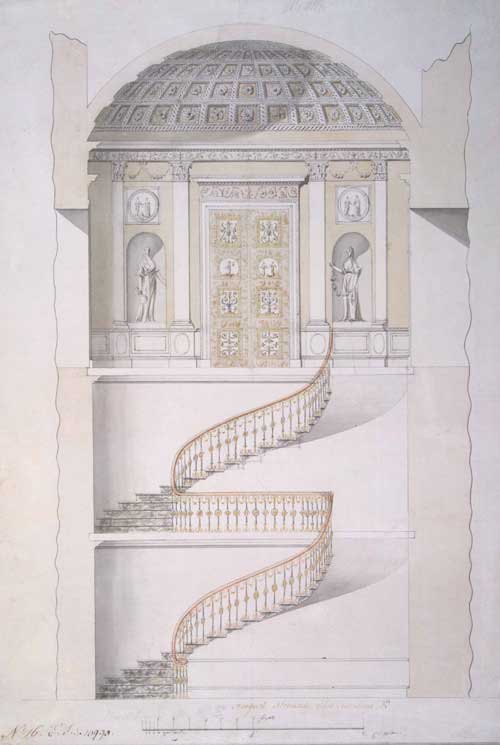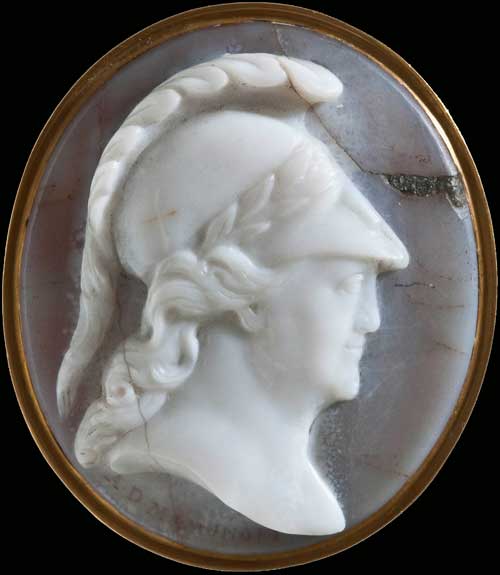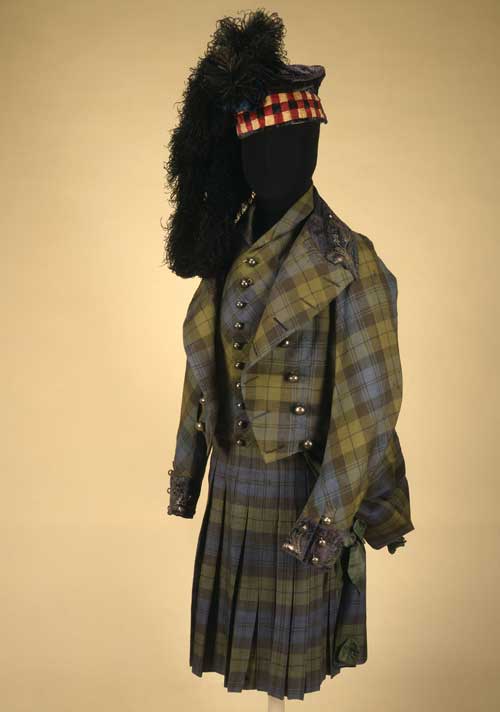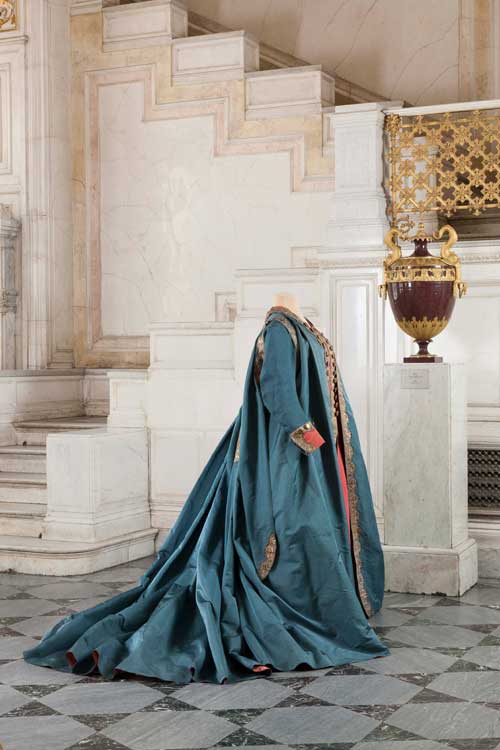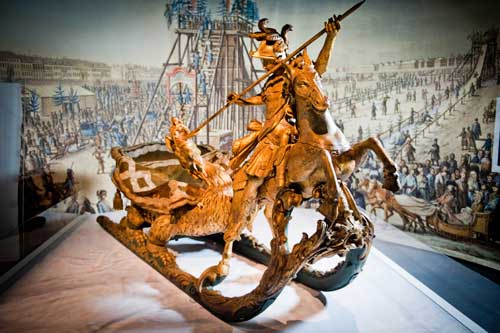

Catherine the Great: An Enlightenment Empress
National Museums Scotland, Edinburgh
13 July– 21 October 2012
by MICHAEL SPENS
The continuing strong relationship of the Museum of Scotland with the Hermitage Museum, St Petersburg, Russia, has led to this special curatorial coup, appropriately a major Edinburgh Festival Exhibition. This is exceptional indeed because the exhibition will not travel elsewhere: it is, as ever, a celebration too of the European Enlightenment, in which 18th-century Scotland played a formative role in philosophy, medicine, law and cultural activity generally.
The temptation has been rigorously resisted by the curators of both museums to resist any tendency to “pack in” Scottish elements. This is, and rightly so, fundamentally a Hermitage exhibition. Furthermore, this exhibition also reveals how Scottish architects and craftsmen were instrumental notably before Edinburgh's New Town got under away, via the London-Scot Charles Cameron. He helped in the creation of the grand squares, palaces and interiors of St. Petersburg and its transformation into the very model of a European capital city. Cameron’s drawings could perhaps have more extensively been displayed. However, landscape and garden design equally suffers from the same constraints of space. (Such might include the country estate Pavlosk, which was also influenced by new English picturesque developments of the same time.)
Indeed, there is a clear example of this European craze spreading to Russia to be found outside St Petersburg, near Vyborg (Finnish Viipuri). A prominent Russian courtier of French origin, Ludwig von Nikolay, bought the manor-estate of Monrepos in l788 and proceeded to make a “poetic-historic-picturesque garden”. The architect Charles Heathcote Tatham, a London contact of von Nikolay's son Paul, was brought in, among other architects, to design a tower feature on a granite rock, under the influence of the ”sublime”, philosophical aesthetic of Edmund Burke. The various talents bearing out Catherine's enthusiasm for architecture and landscape gardening as at Pavlovsk outside the city, were all fired by such Enlightenment culture, frequently realised via Edinburgh. Scottish plantsmen, like John Fraser, fellow countrymen architects Cameron, Adam Menelaws and William Hastie all ensured that the spirit of Robert Adam (who Catherine unfortunately failed to persuade across) spread through Russia. Edinburgh building tradesmen, plasterers, masons and bricklayers were all recruited from Scotland in numbers eventually approaching a hundred to help realise Catherine's dream city.
The exhibition is notable in that every major sphere of Enlightenment culture is expressed by carefully chosen representative items, objets d'art, paintings, sculpture and of science, notably medicine. Indeed Catherine, with typical courage, offered herself for inoculation against smallpox (even though Thomas Dimsdale's English method was not fully proven). She survived, and her family were then subject to the same precaution in the face of the widespread continental spread of this feared killer disease.
In engineering, steps were taken to import the talents and skills of the Carron Ironworks, from Falkirk, Scotland, led by the director, Charles Gascoigne. In this way modern technology was brought to Russia, valuable not only in the construction of new bridges (such as Green Bridge in the city) but also in the manufacturing of superior cannon. Indeed a works was set up at Petrozavodsk effectively as a branch of Carron.
The man who persuaded Gascoigne to come to Russia, predictably with a professional interest in military cannon as much as civic bridges, was the famous Admiral Samuel Greig, from Inverkeithing across the Forth from Edinburgh. Following military distinction he was greatly honoured and promoted by Catherine, having been originally a master's mate from Scotland. In 1782 he was both elected in Britain as a Fellow of the Royal Society as well as an honorary member of the Russian Academy of Sciences. Perhaps even more than Charles Cameron he epitomised the kind of figure Catherine was looking for, a distinguished admiral in the Turkish wars, and a proficient technologist in peace.
Advisedly, the exhibition also reveals the other side of Catherine, the admirer equally of superb uniforms and of beautiful dresses: in all that makes for a splendiferous, Imperial Court. (The Hermitage has superbly conformed here to all the expectations of the Edinburgh curators.) The quality of female dresses and their couture forms a perfect complement to the imposing but elegant dress uniforms of the military. Indeed Catherine herself clearly wore brilliant uniforms and dresses of military demeanor (repeating elite regimental designs), so to emphasise her omnipotence. This challenge to male egos is best revealed in the masterly equestrian portrait: Catherine is depicted in Horse Guards' uniform, astride her prancing white stallion Brilliance. Such a stance can by contrast be compared with such courtly uniformed portraits of one of her lovers, Count Grigory Orlov, and their presumed illegitimate son Aleksey Bobrinsky (the former in the catalogue, the latter in the exhibition). The fulsome representation of human imagery is a major characteristic in this exhibition, through the portraits of the incomers, many of whose expressions tellingly reveal both an air of self-satisfaction and an accompanying degree of obsequiousness. Greig indeed seems so, Cameron looks somewhat cowed (in the catalogue) as if his ID is being taken; Gascoigne appears to be wary, perhaps of a possible charge of disloyalty to the British Crown. (Perish that incumbent thought of “What if they ended up on the wrong side there?”). In the ensuing surge and sway of the prevalent contemporary European politics, which Tolstoy was later to depict so dramatically, any outcome was possible.
A superb collection of classical heads and busts is complemented by an excellently curated and displayed array of medallions, cameos and personalia. Catherine is portrayed appropriately as a classical Minerva in one, to her apparent pleasure. Typically, and on the best of advice from the French “philosophe”/art expert Denis Diderot and others in the wings, such as Voltaire (whose own library was acquired), Catherine's collecting followed her own intuition as to whose advice to follow. This was often to bring the result that she bought, often clandestinely for her Russia, whole collections. Her approved agents were thus to be found everywhere, often acquiring items anonymously on her behalf.
During the 1770s the Paris market was pre-eminent, with many key works ripe for acquisition in the foreshadow of the French Revolution. (Although Catherine was shocked by such events.) Then from England came a major part of the collection of Sir Robert Walpole. As the catalogue to this exhibition explains, a member of the present Hermitage staff, Irina Artemieva recently unearthed the fact that on the same ship which conveyed this part-collection from London to St Petersburg, there arrived also a major batch of works from Venice previously obtained almost a decade earlier with Catherine's agreement.
The new British consul in Venice, continuing from Joseph Smith, an Aberdonian Scot named John Udny, had earlier as an agent visited Catherine in Russia and persuaded her to acquire these works, circumventing the Venetian customs duties by shipping the paintings from Livorno to England. (The subtle ways of collecting never change!) A decade later, they reached St Petersburg accompanying the Walpole collection in undercover consignment. The Venice paintings included works by Tintoretto, Bellucci and Salvatore Rosa; in London they were factored discreetly by Udny's elder brother Robert. Here was a Scottish network in operation, careful to obviate jealous English interests: moreover Catherine had had trust enough to pay John Udny years in advance of receiving these works in St Petersburg.
Throughout art history the greatest collections have usually been the fruit of the collector's own “hunch”, not that of the committees with which curators must now abide. Catherine relied upon worldly figures such as Prince Dmitry Alekseyevitch Golitsyn to assist. The collection of cameos of the Duc d'Orleans reached St Petersburg two years before the French Revolution took effect and included a 16th-century gemstone cameo portrait in miniature of Queen Elizabeth I of England, which London might dearly have wished to acquire. The Duc d'Orleans was an inevitable victim of the French Revolution. So came a windfall collection, but as fruit of an event which later alarmed her in its significance for society, the French Revolution and its guillotine seemed to her a perverse distortion of those Enlightenment principles she welcomed as the foundation of her political philosophy. Unfortunately she died less than a decade before Napoleon began the chain of conquests, which ultimately became a threat to Russia.
The ceramic dinner sets and additaments on display are superb, including examples of the famous “Green Frog Service” by Joshua Wedgwood, which comprised in total some 844 pieces: a clear evidence for invited international guests, of St Petersburg's pre-eminence in court and diplomacy, thus deployed to good effect. The ultimate purpose for Catherine as a ruler in a manifestly despotic precedence was to bring Russia into the Enlightenment Age, by fair means or foul. But by creating a confident, positive and outward-looking attitude at Court, and choosing her leaders and administrators with extraordinarily sound judgment, she achieved that unique position as an Enlightenment visionary.
Whether she could have saved Russia a few years after her death when Napoleon eventually invaded, remains debatable: but she would as always have taken sound strategic advice, inspiring and mobilising her subjects to resist. Not so long after her death occurred, Napoleon was in the end prevented from total victory, despite burning Moscow down, not only by the intervention of winter but by sound strategy and the determined courage of a Russia built on her achievements. (Probably with say, the specific talent of a Churchill for wartime leadership she could herself have won this “patriotic war” if she had lived.) For a power-crazed megalomaniac Napoleon substitute the even more pathologically insane Hitler, Catherine was simply brilliant, always of sound judgment, and provided her Russia with an inspiring leadership at all levels of society in her time.
This is a superb exhibition, excellently curated, both from Edinburgh and St Petersburg, which marks a pivotal period of European history. There is a fully sourced scholarly catalogue with informative, well-argued essays from Russia and with a most informative keynote piece by Vyacheslav Fedorov. Anthony Cross supplies a vital end-piece article entitled “Scots in the Service of the Great Catherine”. And if there is a single item from the exhibition that should star in any future filmic narrative of Catherine it should be the magnificent Russian “Carnival Sledge” on show (17.4 metres long, 11.6 metres high) of carved and gilded wood, plus steel runners of Carron technology; a masterpiece of Russian craftsmanship. It says all about the St Petersburg spirit of achievement and invincibility through centuries of threat.
Signing off (Cat. and Exhibit No.219) is a touching commemoration from the Hermitage Museum, of Catherine's admiration for Scotland: a Highland Costume, with head-dress bonnet surmounted by ostrich feathers, Sword, Belt, Dirk with Utensils and Snuff Set, dated 1814-16. A single dark green hued “Government” tartan was chosen both for the kilt and matching jacket and plaid (the tartan worn by other dignitaries at the time). This outfit from the Hermitage belonged either to Alexander I of Russia, Catherine's grandson, acquired during a visit to London at that time, or else acquired by his brother, Grand Duke Nicholas during his own visit to Edinburgh, 1816-17, and presented to Alexander. It is certainly a rather more handsome ensemble than that worn by King George IV (with pink tights) on his first visit to Edinburgh in 1822 (as arranged by Sir Walter Scott). The exhibit might be said to represent a final and mutual homage to Catherine The Great, one between Russia and Scotland.
It is a bonus that the Exhibition continues until 21st October, albeit long after the Edinburgh Festival ends officially. The Catalogue, 208 pages fully illustrated in colour, priced at £15.99. ISBN: 978-1-905267-74-3.
